
Most hunters nowadays associate turkey hunting with calling in a gobbler as the weather and birds fire up with spring. But as the turkey population has increased, fall turkey hunting seasons are available to hunters in most states.
In this article, we’ll cover everything you need to know to hunt turkey in the fall.
Overview of Fall Turkey Hunting
A turkey in the fall has a different mindset than a spring turkey. Instead of looking for an aggressive gobbler who has nothing but love on his mind, you are instead looking for flocks that generally consist of adult hens (adult females), jakes (young males), and jennies (young females). Occasional loose bachelor flocks of gobblers also form in the fall. No matter the flock’s gender or composition, they are all trying to eat as much as possible before the winter hits.
With that in mind you you are changing where you’re looking for the birds, what birds you’re looking for, and how you set up in the fall. In many states, you can take either gender of bird in the fall, so if you only run into hens don’t worry, you can still have that Thanksgiving bird. However, local laws vary, so always check with your state’s game commission before heading out..
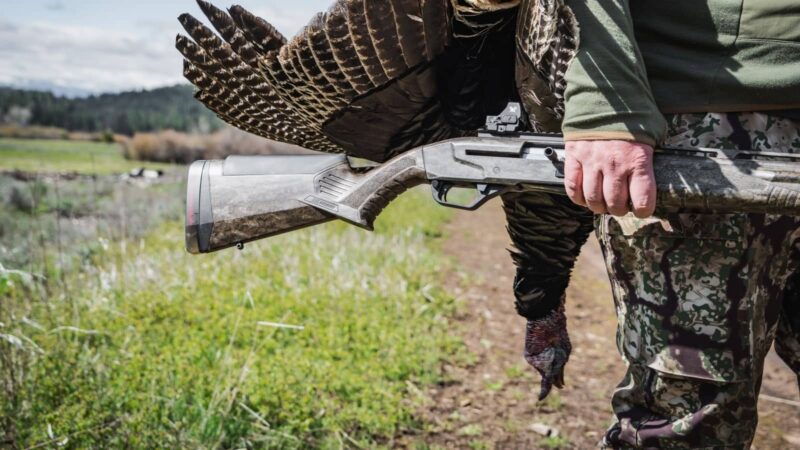

Best Times and Locations for Fall Turkey Hunting
Make sure your state has a fall season available. While a good majority of the states do have one, there are several that don’t have fall turkey seasons. Location-wise good turkey grounds in the spring will generally translate into good turkey grounds in the fall.
Particular states to consider would be New Hampshire, Vermont, and New York. These states fall shotgun seasons usually starts around October. A bit further south, Pennsylvania and West Virginia also have good hunting options available with public access available. Outside of the northeast another state that has good fall success for turkey would be Michigan. Whichever state you are or want to travel to keep regulations in mind though. Some states break up into different zones and have different seasons in different zones, others require tags that may be difficult to acquire. So do plenty of research first to ensure thatyou can hunt a particular state’s fall turkey season.
Best Times and Locations for Southeast Turkey Hunting
For fall turkey hunting in the Southeast, you are limited in your options of hunting grounds. The majority of the states often do not have a fall turkey season. Georgia, Louisiana, Mississippi, North Carolina, and South Carolina generally have no fall season. This can change yearly, so you must keep yourself up to date.
Generally, Alabama, Florida, and Tennessee do have a fall Turkey season. Florida is your best bet for late season birds in the north of the state. With a more temperate climate, expect a later fall Turkey hunting season spanning from November to January depending on the zone. Additionally Florida is the only state you get a shot at the Osceola subspecies of the turkey, a highly sought after bird for those chasing a grand slam.
Finally, keep in mind each state has different regulations, so you have to check to make sure you are staying square on your hunts.
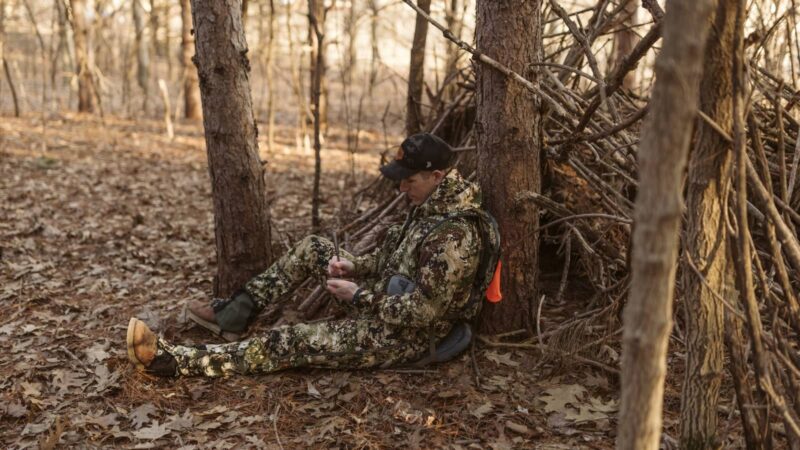

Essential Gear for Fall Turkey Hunting
For just the bare essentials for fall turkey hunting, you don’t need much and don’t want to carry too much. Packing in light for fall turkey hunting can be key, because the fall flocks of turkeys can cover large swaths of land moving between their roosts and food. So the less gear you have, the easier you can move to track the birds.
Clothing and Camouflage
For clothing and camouflage, you can go as cheap or as expensive as you want. I go with the cheap side of things here, with most of my stuff being the cheapest Realtree Edge stuff I could find. The basic gist of it is you want to be covered up and not be wearing too many solid colors that can show the birds your movement. Turkeys are very cautious and can easily detect movement. So garment-wise, long sleeves, long pants, gloves, and a facemask are a must, you want to cover up all your skin. Additionally, for fall hunts in warmer weather, this will help keep the bugs from being able to get at you.


Calls and Decoys
While the common misconception is that turkeys in the fall aren’t very vocal and won’t respond to calls, that really isn’t the case. Bring along two calls: a diaphragm call and a slate call with you so you can respond to the birds when you hear them. For decoys, normally a tom and hen will be plenty, if you want to travel even lighter a single hen would work. Do be aware of state regulations, for example, Alabama does not allow decoys in the fall.
Weapons and Ammunition
A shotgun with an appropriate turkey load is all you need. You can go as high-end as you want or as cheap as you want. I often use a cheap $180 single-shot shotgun with a Gobblestopper red dot on top, but will also gladly take a nice semi-auto with me as well. For tube-fed shotguns do remember to check what your state’s regulations are. I have to plug mine to 2+1 to stay legal. For ammunition selection it is again the same, you can use anything from a cheaper lead shot load like Winchester Longbeard XR that I use or something that uses ultra-dense tungsten shot. All that matters is that they group well with your shotgun.
Other Turkey-Hunting Accessories
While I said packing light was key, there are a few other things I would recommend you to bring on your fall turkey hunt:
- Binoculars: Great for checking to see if that black blob 200 yards down the clearing is a turkey or an old stump,
- Seat Cushion: A seat cushion or even a small foam pad can make turkey hunting a lot more comfortable. Sitting on the ground sucks, especially sitting on rocks or pine roots.
- Snacks / Water: Snacks are great and can raise morale if it’s been a slow hunt. The water is self-explanatory, stay hydrated.
These things should only add minimal bulk to what you’re packing in, and some of the seat cushion options can clip onto you so you can easily just sit down on top of them.
Scouting and Locating Turkeys


When scouting for fall turkeys, you are going to have to put in a lot of time and steps to succeed. You want to keep your eyes open for bird sign on the ground such as tracks, droppings, and feathers.
You want to find three areas for fall turkeys:
- Their food source
- Their roosts
- Their travel corridors
Fall turkey food sources
Finding where the turkeys eat will make your hunt a lot easier. Think:
- Acorns: If you can find fruiting oak trees that is dropping acorns for the year, you have found gold. Turkeys will pass over other food sources to get acorns
- Agricultural grain fields: Fields that have been harvested are another quality food source for turkey, especially corn
- Green Fields: Scout green fields early on in the season. They hold plenty of bugs that the younger turkeys love for their high protein content.
- Wild berries: Any wild berry or seed-producing vegetation can attract turkey as well.
Turkey roosts
With the food side of the equation done you need to find the roosts. This is where the turkeys will stay up in the trees overnight. Turkeys tend to prefer mature hardwood stands along the tops of ridges. These will usually be near the food sources and water sources. During the middle of the day while scouting you can also find dropped feathers and droppings under these tree to confirm a potential roost.
Travel corridors
When both the food and roost figured out, the last thing you need to figure out is the travel corridors in between them. You want to look for any bird sign on the ground such as tracks, scratchings in the leaves, droppings, and feathers. Usually, the land will naturally determine the route the birds will take. You can also arrive before dawn to observe the birds leave their roosts from a distance. That way you can see which direction they are traveling.
Calling Techniques
The fall is the perfect time to get started with turkey calling. In the spring, you have to be strategic, calling infrequently to get a “conversation” going between the turkeys in the hopes of drawing a big tom. You won’t get one in the fall, so you can call as much as you want, and the quality of the call isn’t as critical. Here are four calls you want to learn ahead of time and use for the fall:
Cluck
Clucks are for when the birds are closer to you. A short and sharp sound that can coax a turkey in closer or just maintain contact. Clucks are softer and more relaxed in tempo and don’t bring too much attention to your hideout. This again can be done with a mouth or slate call.
https://www.youtube.com/watch?v=wTyPmhjdJ3M
Kee-kee
The kee-kee call is a triple whistle call that is usually associated with lost or distressed turkeys, especially the young ones. This is a great call for when the turkeys are regrouping. This can bring in a passing flock of birds to come check out the “lost bird”. A diaphragm call is best for these but a slate can work as well.
https://www.youtube.com/watch?v=CwKxYwtZePc
Purr
The purr is a soft rolling sound that the turkeys make to say they are content and happy telling other birds they’re in a good spot. This can create a sense of safety for the birds and can bring the birds into shooting range when you are set up on a food source. The slate call are perfect for purring.
https://www.youtube.com/watch?v=cH_8NzDsIEY
Yelp
The yelp is a basic and versatile call essential to locating turkeys. This is the sound that hens use to communicate with other birds. You want these with a good cadence in strings of three to eight but even up to sixteen yelps. This sound sparks their curiosity and can have the flock come in trying to connect with what they think is another turkey. This can be done with both a mouth or slate call.
https://www.youtube.com/watch?v=LqrbHcDIfKA
Setting Up for Fall Turkey Success
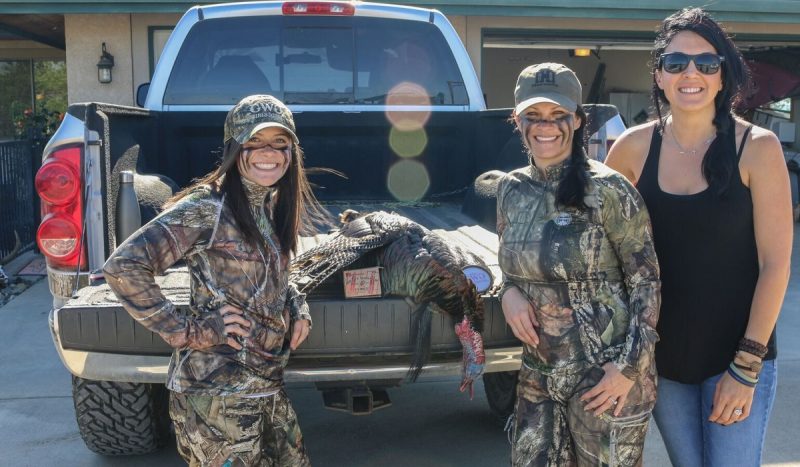

With all the scouting done, you need to set up your hunt. There are three main ways to go about it:
- You can hunt the food sources with decoys
- Set up an ambush on the travel corridors
- Scatter the flock
With hunting near the food sources, you want to set up realistic decoys near or on the feeding areas, then start calling from your chosen spot. Hopefully, the combination of decoys and calling will entice the flock in to try and feed.
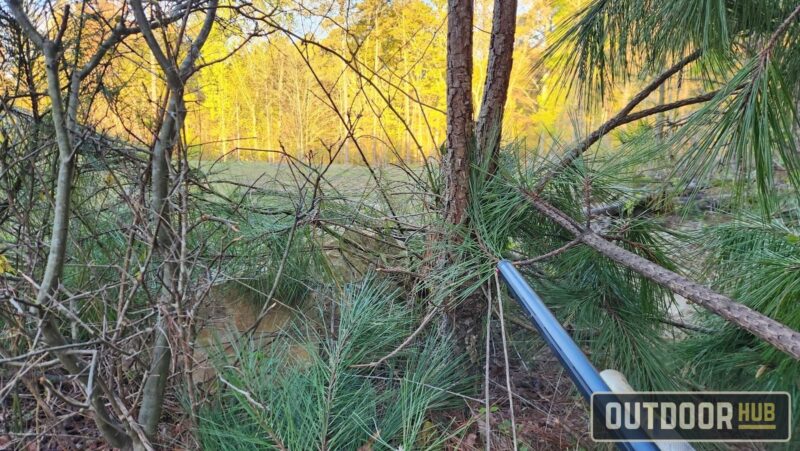

Setting up an ambush on the travel corridor can be a very productive method that has a lower risk of pushing the birds out of your area. This is simply using the information you gathered from scouting you set up on a known travel corridor and wait. You are waiting for the birds to move to a food source in the morning or return to the roost in the evening. You want to either brush in or even set up a ground blind and just be very still and patient.
The last method is scattering the flock, where you purposely mess with the birds to scatter them from each other. The scattered smaller groups of birds will be more receptive to calling as they try to reform into a bigger flock again. Then as they come, back you can pick out your target bird. This is a fun and effective method to getting a fall bird, but can put more pressure on the turkeys—possibly pushing them away.
Tips for a Successful Fall Turkey Hunt
Adjust as the Season Goes on
As the fall sets in and the forest changes, so do the turkeys. You have to be able to adjust your fall turkey tactics as the colder weather sets in. Just because you saw the birds in a spot at the beginning of the fall when things were still green doesn’t mean they will be there later.
Choose Your Shots Carefully
You might notice I never said how much ammo you should take into the woods for fall turkey hunting. I may only take two or three shells with me out into the woods. You may only need one or two shells, because you should be very selective with your shots. If you don’t think you can drop the bird with the shot, don’t take it. Let it pass or wait a bit longer for a better shoot opportunity.
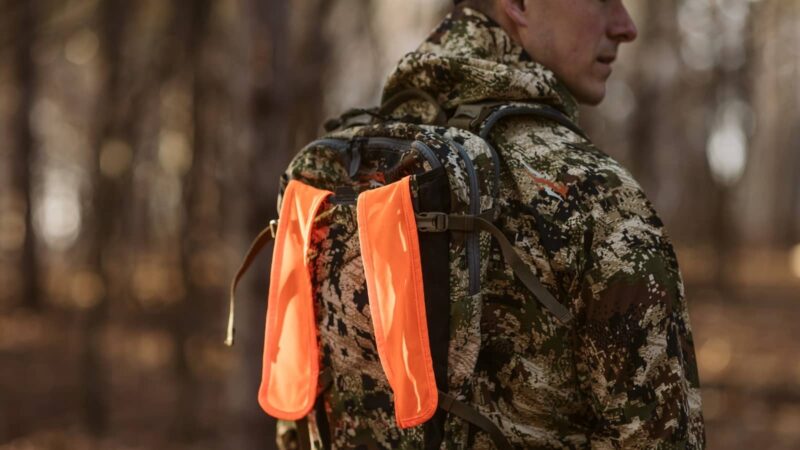

Safety Considerations for Fall Turkey Hunting
Safety is key for turkey hunting, especially on public land where there could be multiple hunters near one another:
- Know what your target is. For the love of God, don’t shoot at movement without knowing what exactly it is.
- On the opposite end of this, if you see another hunter moving towards you, yell “Stop” first.
- Don’t start moving right away if you are in camo, they might shoot in reaction to your movement.
- When you are posted up try to have a large natural barrier behind you. You want something sturdy enough to shield you just in case Elmer Fudd starts blasting.
- Finally, if you are successful in bagging that bird, make sure to cover it up with a game bag or a piece of hunter-orange clothing. You don’t want someone popping a shot at you mistaking your dead bird for a live one.
Common Mistakes to Avoid
Not Calling Birds
Don’t be afraid to call out to the birds, even if you aren’t the most skilled with turkey calling. Fall turkey hunting gives you the leeway to call more freely. This is a great opportunity for you to practice your calling for the spring.
Hunting too Close to Food Sources and Roosts
Don’t hunt too close to the food sources or the roosts early on in the fall Season. While you can bag a bird this way, this can scatter the birds and push them away from you in the long run.
Movement
Try to keep movement to a minimum when calling, especially if you’re getting birds to gobble back. Sometimes a tom will run up behind you, but any sudden movement will scare them off. However: if you observe a turkey who is unaware of your presence go down into a fold in the landscape where you can’t get a shot and you have the opportunity to conceal your movement with terrain or foliage, that can be an advantageous time to move to where you can get a clear shot.
FAQs
How do you turkey hunt in the fall?
By scouting out the food sources that the fall flocks of turkeys are feeding on and then set up in the travel path between the food and roosts.
Is fall turkey hunting harder?
I wouldn’t call fall turkey hunting harder, instead I would call it different. It is more akin to hunting white tail than hunting turkeys in the spring. Instead of calling in birds you have to scout, find bird signs, and wait patiently for the most part.
What time of day is best for fall turkey hunting?
Late mornings to mid-afternoons can be very productive as the turkeys make their way to the food and back.
What turkey decoy to use in the fall?
If you can only have one decoy you want at least a hen. This can bring in the flocks of hens, jakes, and jennies to investigate
What is the best call for a turkey in the fall?
If you can only have one, I recommend the slate call over the diaphragm. The learning curve isn’t as steep with a slate call, and they are a good starting point for newer turkey hunters.
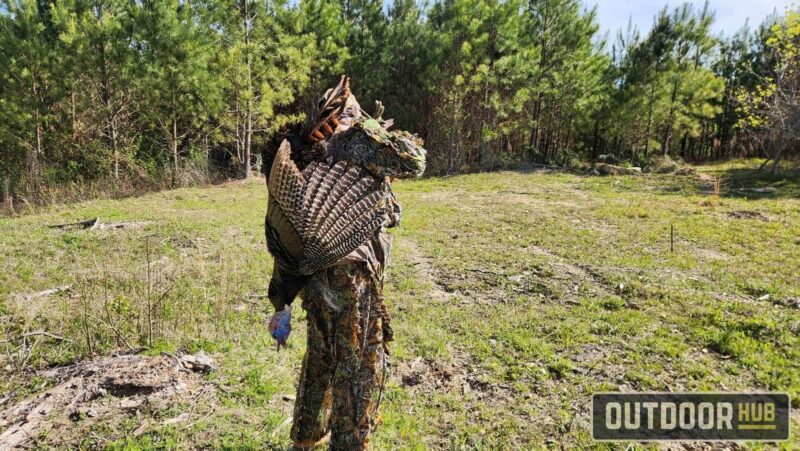

Conclusion
The fall turkey season is great opportunity for hunters to get another delicious bird for the year, and should not be skipped over where available. While hunting turkeys in the fall doesnt give big excited gobbles of a love drunk mature tom like you do in the spring. You still get to call in birds with a more subtle, yelps, purrs, clucks, and kee kees. It is true the season can be more challenging to hunt, but those challenges arent something that the average hunter can’t overcome. The lessons hunters can learn from fall turkey season can translate into greater future success for bagging that big gobbler in the spring.

